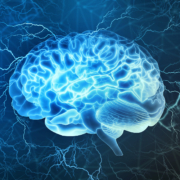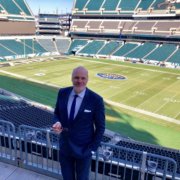Acute stroke: critical emergency steps
A stroke occurs when some form of interruption to the brain’s blood supply causes damage to a portion of the brain. But what happens in the immediate aftermath of a stroke? And how, specifically, do medical professionals go about treating someone who has experienced one?
In all cases, time is of the essence, according to Dr. Thomas Hemmen, a vascular neurologist and director of the Stroke Center at UC San Diego Health, a certified Comprehensive Stroke Center.
Dr. Hemmen noted that most doctors and health care facilities aim to treat stroke victims as early as possible. Medical treatment can only be given up to 4.5 hours and catheter-based treatments up to 24 hours from stroke onset. This makes cerebrovascular disease one of the most critical time-sensitive conditions. Even within this time, sooner treatment is better and every minute counts.
“We see 24 hours as the window of opportunity,” he said. “It is currently not possible to treat strokes outside this window, but the quicker we respond the more likely it is that patients have a good chance of recovery.”
The first step in the aftermath of an acute stroke is for medical personnel to get a scan. Hospitals will generally always perform a CT scan first, which may or may not show the signs of acute stroke in the way a Magnetic Resonance Imaging (MRI) scan can. Sometimes, response teams must treat based on the syndrome—they cannot afford to wait hours for someone’s turn in the magnet before providing treatment.
Once the scans have been taken, the next critical step is to establish a rough idea of when the stroke occurred, or when the patient was last known to be well.
We see 24 hours as the window of opportunity,” he said. “It is currently not possible to treat strokes outside this window, but the quicker we respond the more likely it is that patients have a good chance of recovery.
– Thomas Hemmen, MD, PhD
Dr. Hemmen said often medical professionals will attempt to ascertain this fact by asking important timeline questions of loved ones or the person who called 911. Which symptoms did they notice first? When did they notice them? Sometimes it also may be necessary to review security footage or other evidence, such as text messages.
“For various reasons, mainly safety, we don’t want to make an assumption that a stroke happened just when they were discovered,” he said. “As humans, we have a tendency to assume that things began the moment we became aware of them, but in the case of a stroke, that’s not necessarily the same and it in fact can be very dangerous to assume it is so.”
The danger, Dr. Hemmen noted, comes in a false timeline: Assuming symptoms began at the time they were noticed erroneously shortens the “window” of treatment, thus leading doctors to think they have more time to treat.
He added that once doctors establish when the stroke occurred, that data point becomes “Time Zero.” From there, doctors can determine treatment protocols.
For patients who are believed to have had an ischemic stroke—that is, a stroke due to a blockage in a blood vessel—Dr. Hemmen said medical professionals have a very limited time frame available to unplug the clog either “medically or mechanically.”
The medical option is administered within 4.5 hours, and revolves around material that Hemmen calls “Drano for the arteries” or “a clot buster” that breaks up the clot.
Depending on the situation, this is either medication dubbed tPA (the generic name is alteplase) or medication called TPK (the generic name is Tenecteplase). Both medicines are in a category of medication known as thrombolytics. They are administered through an IV or in the form of a shot.
“[Thrombolytics] really work best in the first few hours,” said Dr. Hemmen. “Every minute it is delayed, the chances of it completely reversing the stroke are lesser and lesser.”
Dr. Hemmen added that delaying the clot busters also can increase risk of secondary hemorrhage; if the drugs are administered too late the tissues may be too compromised to handle the drugs.
Once the short window for TPA and TPK has closed, provided the artery is big enough, doctors can eradicate the clot mechanically—that is, conduct a scan to locate the clot and remove it manually using a tool inside the artery itself. Some call this “clot-snatching,” or Endovascular Thrombectomy.
Dr. Hemmen noted that this must be done within 24 hours for the treatment to be most effective.
For the approximately 15 percent of patients thought to have had a hemorrhagic stroke (remember, these are far less common than ischemic strokes), the treatment is different.
Because patients are already bleeding, thrombolytics are not an option—administering clot-busting medication can make that bleeding worse. . Instead, patients who have experienced larger hemorrhagic strokes in one of the main cerebral arteries likely may need surgery, Dr. Hemmen said.
There are several different surgeries available currently.
(It’s also worth noting that many hemorrhagic strokes are in small vessels in the basal ganglia, and that many of these strokes resolve without surgical intervention.)
Following this response (the “acute phase,” as some call it), medical professionals begin almost immediately with the “recovery phase,” which comprises physical, speech, and occupational therapy to help patients recover the faculties they lost to the stroke.
According to Dr. Hemmen, these therapies can range from relearning certain words to becoming reacquainted with how to grab a pen. They also can pave the way for secondary rehab—if, for instance, a stroke causes a patient to walk differently, that patient might develop spinal impingement down the road, so therapists can help patients avoid that from the very beginning.
“It’s important to help these patients recover to the best of their ability,” Dr. Hemmen said. “There is almost always improvement that can be made.”
This article has been factchecked. For more about that process, click here.









